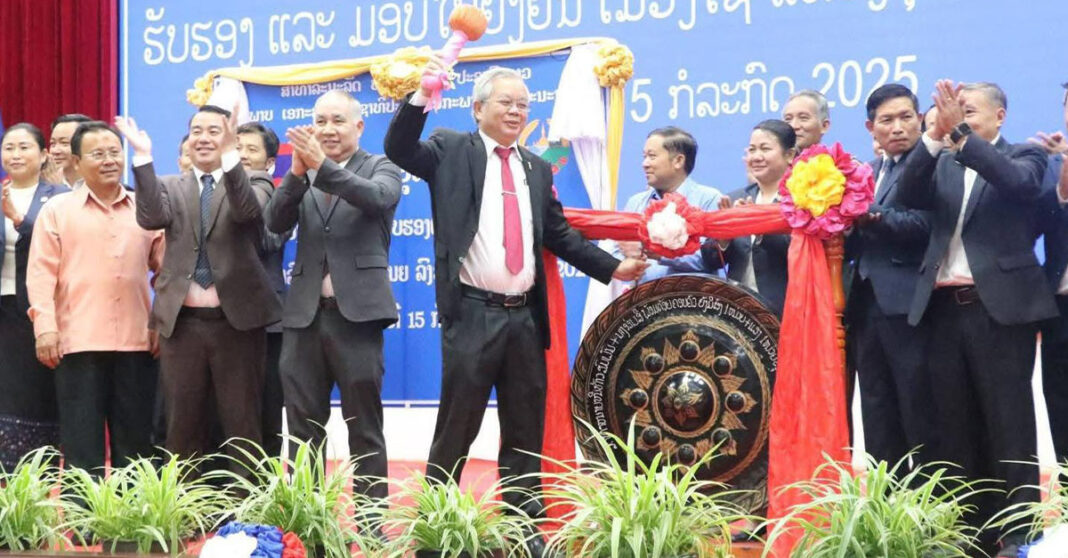Laos continues to make significant strides in poverty eradication, with multiple districts across the country being officially declared poverty-free, bringing the nation closer to its goal of graduating from Least Developed Country (LDC) status by 2026.
On 15 July, Xay District in Oudomxay Province was officially recognized as the province’s first poverty-free district. The designation is based on national benchmarks that include access to essential infrastructure, services, and long-term sustainability.
Acting District Governor Somchanh Thepphaly reported that Xay has achieved 100 percent of its development targets.
Of the district’s 94 villages, 79 have been declared poverty-free, 44 of which are now classified as “developed”, while only 18 villages remain below the poverty line.
The district’s progress was driven by improvements across key sectors. In education, 15 schools have been built to accommodate local students, while healthcare access has expanded with the operation of 19 hospitals and health centers. A notable highlight is universal access to groundwater, with 95 percent of residents benefiting from a clean water supply system.
Infrastructure development has also played a vital role, including a well-connected road network and a Lao-China railway station, which links the district to neighboring provinces and facilitates travel and commerce.
Shortly after, on 18 February, Xieng Ngeun District in Luang Prabang Province was also declared poverty-free. The district’s economy has grown at an average annual rate of 8.7 percent, reaching a total domestic income of LAK 644.5 billion (approximately USD 37.9 million).
Recent assessments show that 83.66 percent of villages in Xieng Ngeun have surpassed the poverty line by meeting government standards in areas such as clean water access, sanitation, transportation, school enrollment, market availability, and sustainable environmental management.
In northern Laos, Luang Prabang City, a major cultural and tourist hub, was declared poverty-free on 3 March. This achievement followed significant infrastructure upgrades, economic growth, and a thriving tourism industry that has raised living standards and contributed to local stability.
This follows major infrastructure improvements and economic growth, including enhanced roads, transportation, utilities, and a tourism sector which has played a crucial role in boosting economic stability and raising residents’ living standards.
Government data shows that 98.3 percent of Luang Prabang City’s population, 16,355 families across 113 villages, have risen out of poverty. This success is attributed to gains in employment, access to permanent housing, secondary education, healthcare, clean water, and electricity.
In the south, Champasack Province marked another milestone on 6 May when six districts, including Pakse City, Phonthong, Bachieng Chalernsouk, Champasack, and Khong, were officially recognized as poverty-free.
These areas were evaluated based on nine criteria, including the presence of secondary schools, healthcare facilities, access to clean water, road and telecom infrastructure, functioning markets, and effective environmental resource management.
Each district also had at least 70 percent of villages rise above the poverty threshold.
In 2024, Nam Bak District in Luang Prabang Province and Pak Nguem District in Vientiane Capital were acknowledged for eliminating poverty, driven by economic growth, improved infrastructure, and peaceful social conditions that foster unity and harmony among residents.
The government also reported that in the previous year, 31,232 families were lifted out of poverty, reaching nearly 90 percent of its annual target.
These poverty reduction initiatives are part of Laos’ objective to graduate from Least Developed Country status by 2026, through sustained economic growth, social development, and enhanced infrastructure.



